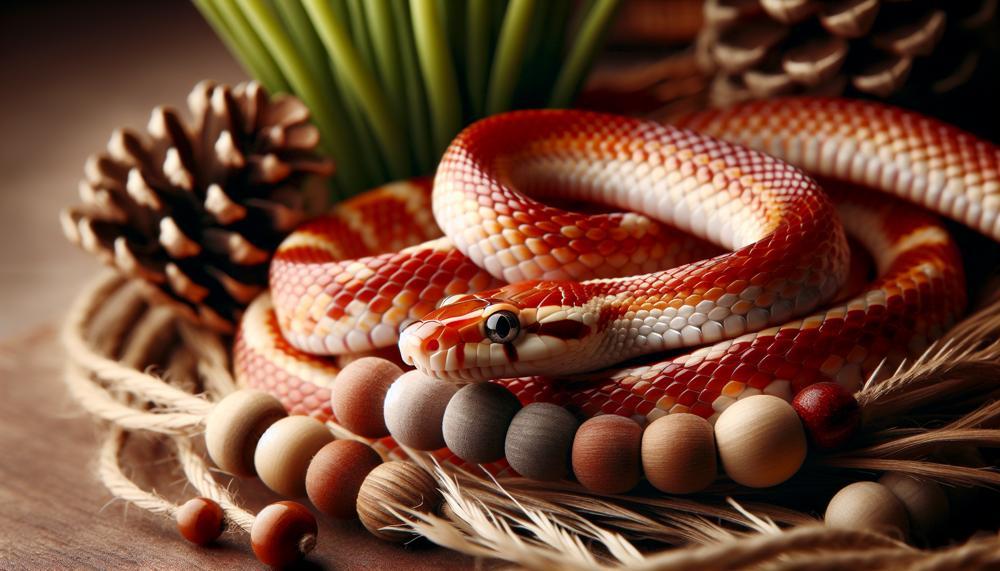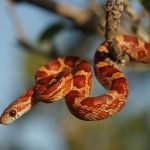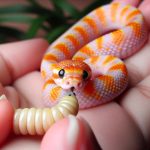Are you considering adding a corn snake to your family of pets? If so, you’re not alone. These captivating creatures have gained popularity as pets in recent years. But before making the decision to bring one home, it’s crucial to ask yourself: do corn snakes make good pets?
Let’s delve into this question and examine the advantages and disadvantages of owning a corn snake. From their low-maintenance care to their distinct personalities, there are numerous factors to consider when determining if a corn snake is the right pet for you.
So, grab your favorite beverage and let’s break it down with some bullet points:
- Corn snakes are docile and easy to handle.
- They come in an array of colors and patterns.
- Their diet mainly consists of mice or rats, making them affordable to feed.
- They require minimal space compared to other pet snakes.
- With proper care, they can live up to 20 years.
- However, they have specific temperature and humidity requirements.
- Due to their delicate nature, they are not recommended for young children.
So, are you ready to discover if a corn snake is the perfect addition to your household? Let’s find out together.
Contents
Corn Snake Basic Info
Below are some key features and care requirements that make corn snakes ideal as pets.
| Characteristic | Description |
| Docile Nature | Corn snakes are known for their calm and mild temperament, seldom biting or striking at their owners. This makes them easy to handle and suitable for families with children. |
| Low Cost | In comparison to other reptiles, corn snakes are relatively inexpensive to purchase and maintain. They do not require specialized equipment or expensive diets, making them an affordable option. |
| Simple Care Requirements | Corn snakes have simple care needs, only requiring a clean and secure enclosure and a steady supply of frozen mice for food. They do not need UV supplementation but may benefit from exposure to UV light. |
| Long Lifespan | With proper care and diet, corn snakes can live for over 20 years in captivity. This makes them a long-term commitment for potential owners. |
| Variety of Colors and Patterns | Corn snakes come in a variety of colors and patterns, making them visually appealing pets. Some popular morphs include Amel (red), Anery (gray), Snow (white), Lavender (purple), Striped (vertical stripes), and Reverse Okeetee (a wide orange stripe down the back). |
| Tolerance of Humans | Corn snakes are tolerant of humans and can become comfortable with handling if trained properly. This makes them ideal for those interested in interacting with their pet. |
When it comes to caring for a corn snake, there are several important considerations to keep in mind.
- Enclosure: Corn snakes require a secure enclosure that is spacious enough for them to move and climb, with a tightly sealed lid to prevent escape. A 20-gallon terrarium is recommended for one adult corn snake.
- Substrate: Choose a substrate that mimics their natural environment, such as aspen shavings or cypress mulch. Avoid using pine or cedar shavings as they can be harmful to snakes.
- Temperature: Corn snakes need a basking area of 85–88 degrees Fahrenheit and a cooler area of 78–82 degrees Fahrenheit. At night, the temperature can drop to 68 degrees Fahrenheit. A heat lamp or under-tank heater can help maintain these temperatures.
Are corn snakes good pets?
Because they are calm, easy to care for, and don’t get very big, corn snakes make good first-time pets. They are also not mean; most of the time, they are calm and easy to handle.
Corn snakes get their name from the spots on their bellies that look like maize, which is related to corn. They don’t do much, but some of them might hang out outside.
About 10 to 15 years is how long corn snakes live. Corn snakes can get up to 150 cm long, and females tend to get longer than males.
Corn snakes are easy to take care of and don’t have as many strict needs when it comes to their surroundings as some other snakes and animals. When it comes to temperature, they like it between 70 and 85 degrees Fahrenheit, with the cool end being about room temperature. An LED light or a heat mat will work.
Once a week, you should feed your corn snake a mouse or rat that is the right size for it.
Reasons Corn Snakes Make Good Pets
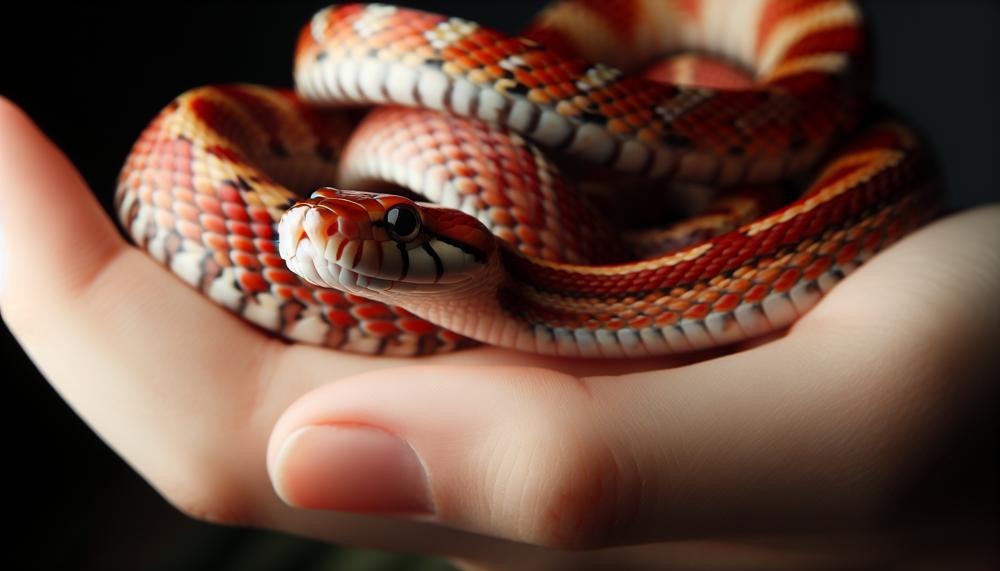
| Reasons | Description |
|---|---|
| Docile Disposition | Corn snakes are known for their docile nature and rarely exhibit aggression towards their owners, making them ideal for handling and interaction. |
| Low Maintenance | Setting up an enclosure for a corn snake is relatively easy and they only require feeding once or twice a week, making them ideal for busy pet owners. |
| Manageable Size | Corn snakes have a maximum length of 6 feet, making them easier to house and handle compared to other snake species that can grow much larger. |
| Variety of Color Morphs | There are over 800 corn snake morphs available, offering a wide range of colors and patterns for owners to choose from. New varieties are constantly being developed, providing even more options for customization. |
| Suitable for All Levels of Experience | Corn snakes make great pets for both beginners and experts alike. They have a relatively simple care routine and a docile temperament, making them suitable for all levels of expertise in snake ownership. |
| Long Lifespan | With proper care, corn snakes can live up to 20 years in captivity, providing owners with a long-term companion and lifelong bond. |
Corn snakes are excellent pets due to their docile disposition, low maintenance requirements, and diverse appearance options. They are suitable for all levels of experience in snake ownership and can become comfortable with handling.
With a manageable maximum length of 6 feet, corn snakes are easier to handle compared to larger snake species. Owners have a variety of over 800 color morphs to choose from, with new varieties constantly being developed.
Why Don’t Corn Snakes Make Good Pets?
Corn snakes may appear to be the perfect choice for a pet due to their calm temperament and stunning appearance. However, there are numerous reasons why they may not be a suitable pet for everyone.
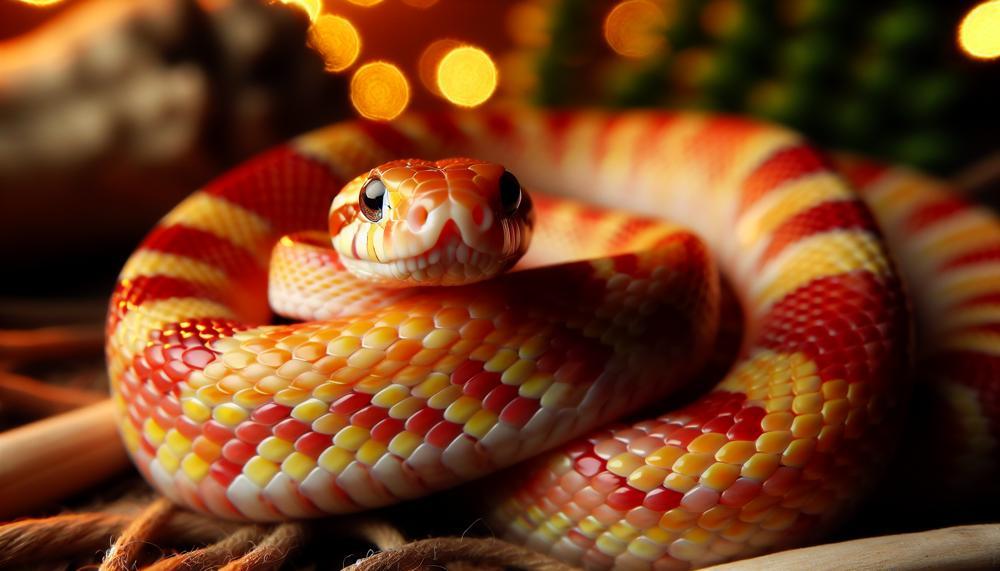
| Reason | Explanation | Impact |
| Housing requirements | Corn snakes have specific temperature and humidity needs that can be challenging to maintain in their enclosure. | If these conditions are not met, the snake can become stressed and more prone to health issues. |
| Live food diet | Corn snakes exclusively consume live rodents, which can be difficult for some owners to handle and can also be costly to sustain. | This may also be a concern for those who are uncomfortable feeding live prey to their pets. |
| Potential health risks | Corn snakes may carry salmonella, which can be transmitted to their owners through handling or coming into contact with their feces. | This poses a risk for individuals with weakened immune systems or young children in the household. |
| Specific habitat requirements | If the snake’s habitat is not properly set up, they can develop respiratory and skin infections. | This requires careful monitoring and regular maintenance of the enclosure. |
| Solo pet | Corn snakes do not enjoy the company of other snakes and cannot be trained or interacted with like other pets. | This means they may not provide the same level of companionship as other animals. |
While corn snakes can make excellent pets for experienced owners who are willing to dedicate the necessary care, these factors make them less suitable for novice pet owners or those seeking a low-maintenance pet.
Conclusion
In summary, corn snakes can be excellent companions for those seeking a gentle and low-maintenance pet.
Their serene disposition, manageable size, and diverse range of colors make them appealing to both novice and seasoned snake enthusiasts. However, it is crucial to take into account their specific care needs, such as temperature and humidity requirements, live food diet, potential health concerns, and their solitary nature.
With proper attention and care, corn snakes can thrive in captivity for up to 20 years, forming a long-lasting bond with their owners.

